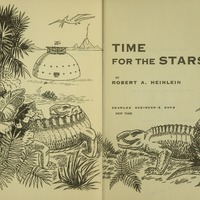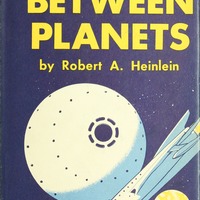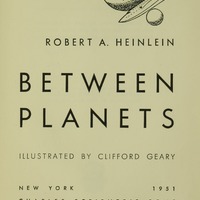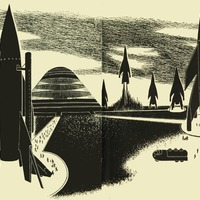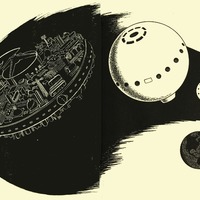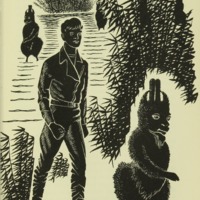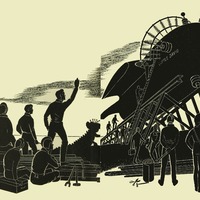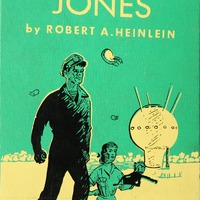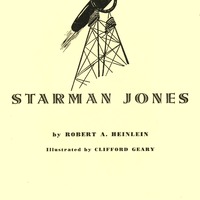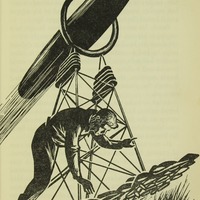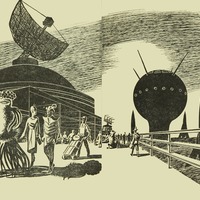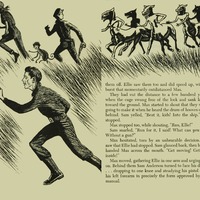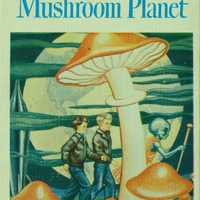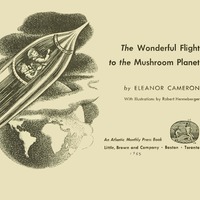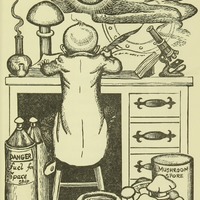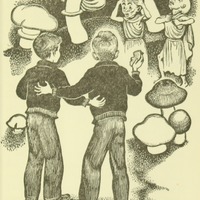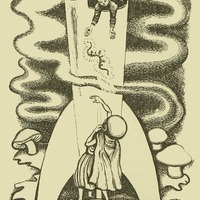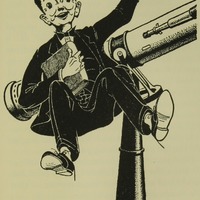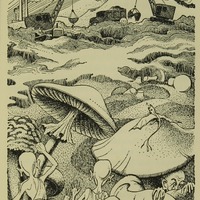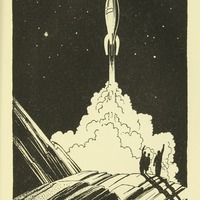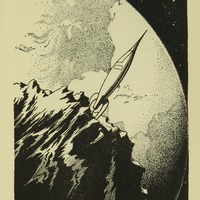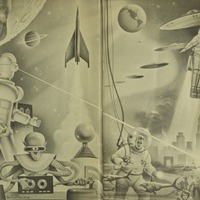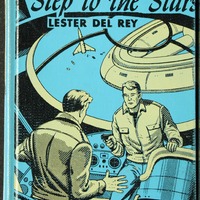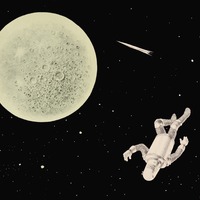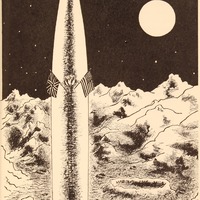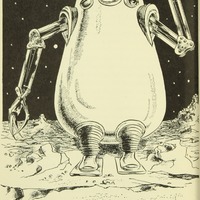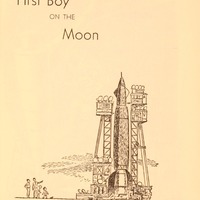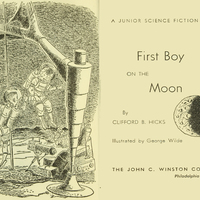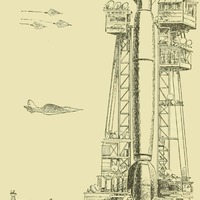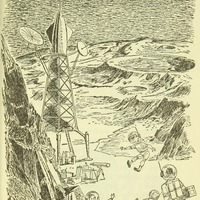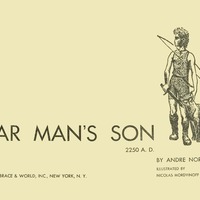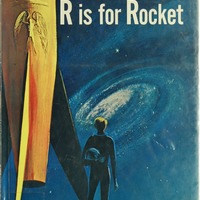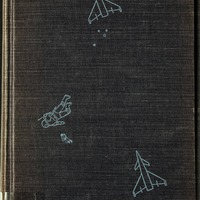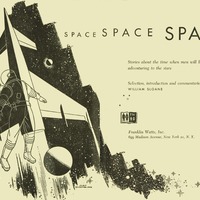Juvenile Sci-Fi
Time for the Stars was written by Robert A. Heinlein and published in 1956. The basic plot line is derived from a 1911 thought experiment in special relativity, commonly called the twin paradox, proposed by French physicist Paul Langevin.
"Time for the Stars." Wikipedia. https://en.wikipedia.org/wiki/Time_for_the_Stars
Between Planets is a juvenile science fiction novel by American writer Robert A. Heinlein, originally serialized in Blue Book magazine in 1951 as "Planets in Combat". It was published in hardcover that year by Scribner's as part of the Heinlein juveniles.
"Between Planets." Wikipedia. https://en.wikipedia.org/wiki/Between_Planets
Starman Jones is a 1953 science fiction novel by Robert A. Heinlein about a farm boy who wants to go to the stars. It was first published by Charles Scribner's Sons as part of the Heinlein juveniles series.
"Starman Jones." Wikipedia. https://en.wikipedia.org/wiki/Starman_Jones
The Wonderful Flight to the Mushroom Planet is a children's science fiction novel written by Eleanor Cameron, illustrated by Robert Henneberger, and published by Little, Brown in 1954. It is set in Pacific Grove, California, and on Basidium, a tiny habitable moon of Earth, invisible from the planet in its orbit 50,000 miles away. The "Mushroom Planet", visited by the protagonists David Topman and Chuck Masterson, is covered in various types of mushrooms and is populated by little green people who are in a state of distress.
"The Wonderful Flight to the Mushroom Planet." Wikipedia. https://en.wikipedia.org/wiki/The_Wonderful_Flight_to_the_Mushroom_Planet
Mr. Bass's Planetoid is a 1958 children's science fiction novel by Canadian author Eleanor Cameron. The novel followed The Wonderful Flight to the Mushroom Planet (1954) and Stowaway to the Mushroom Planet (1956).
"Mr. Bass's Planetoid." Wikipedia. https://en.wikipedia.org/wiki/Mr._Bass%27s_Planetoid
Mission to the Moon, by Lester del Rey and published in 1956, was illustrated by noted artist Alex Schomberg.
Step to the Stars, by Lester del Rey, is a juvenile science fiction novel about the construction of the first space station. This is hard science fiction, using the best technological ideas of 1954 to tell an adventure story of man’s exploration of space.
"Step to the Stars." Goodreads. https://www.goodreads.com/book/show/10366752-step-to-the-stars
Moon Ahead, by Leslie Greener, illustrated by William Pene du Bois, was published in 1951. It is the story of two teenage boys who go on a three day rocket trip to the moon.
In 1959, Clifford B. Hicks penned his first children's book, First Boy on the Moon, which was dubbed Best Juvenile Book of the Year by the Friends of American Writers.
"Clifford B. Hicks." Wikipedia. https://en.wikipedia.org/wiki/Clifford_B._Hicks
Originally published as Starman’s Son: 2250 A.D., Andre Norton’s first science fiction novel has been also titled Daybreak — 2250 A.D.
R Is for Rocket (1962) is a short story collection by American writer Ray Bradbury, compiled for Young Adult library sections. It contains fifteen stories from earlier Bradbury collections, and two previously uncollected stories.
"R Is for Rocket." Wikipedia. https://en.wikipedia.org/wiki/R_Is_for_Rocket
Space, Space, Space: Stories About the Time When Men Will Be Adventuring to the Stars, a collection of short stories edited by William Sloane, was published in 1953. William Milligan Sloane III (1906–1974), also known simply as William Sloane, was an American author of fantasy and science fiction literature, and a publisher.
From 1955 until his death Sloane was the director of the Rutgers University Press in New Jersey. Before then, he had spent more than 25 years with several other publishers. He formed his own publishing concern, William Sloane Associates, in 1946.
Seregil of Rhiminee. "William Sloane." Risingshadow. https://www.risingshadow.net/library/author/5218-william-sloane
